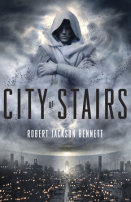Companion track along route may tie Maalaea, Kapalua
August 12, 2014
 |
| "Myrtle" Sugar Cane Train |
By CHRIS SUGIDONO - Staff Writer (csugidono@mauinews.com) ,
The Maui News
The effort to save West Maui's historic Sugar Cane Train has taken a new turn as Maui County Transportation Director Jo Anne Johnson Winer looks at using the popular tourist attraction as a transit rail system as well.
While Johnson Winer is helping to save the train as a public citizen, she said that in her capacity as transportation director she and her department must evaluate the system for future uses.
"It's important for us to do our due diligence to see if there is some aspect that can work into public transit," she Monday. "Right now, because of the purpose that it serves, it's more dedicated to tourists, but I also think it has an importance to the (county) department of economic development in terms of job creation."
The 6-mile track from Puukolii to Lahaina and the train are managed by Lahaina Kaanapali & Pacific Railroad. The train made its final run Aug. 1 after 45 years. The railroad built in 1969 has handled some 15 million passengers and is one of the state's last steam engine railroads.
State Rep. Angus McKelvey, whose father helped start the railroad, said that the train could be the basis for a transportation system to Maalaea on one end and Kapalua on the other, given demand. He noted that the state is looking at extending the Lahaina bypass to Olowalu, "but after that it is really iffy."
The problems facing the next phases of the bypass are building highways over wetlands, especially in the Ukumehame area, and over the gulches along the pali. A train offers a smaller footprint, he said, adding that the engines would have to be modern electric or diesel but could have historic facades.
"This is all long range," he said. "It is very doable."
Johnson Winer cautioned that using the railroad for public transportation is still "nowhere in the scenes" but suggested that a companion rail could be built, which could extend to Kapalua or toward the pali. She said that the railroad could have two rails, one for the tourist attraction and another for public transit.
"Although it's not part of Hawaiian culture, it has a historical thread that goes way back," she said of the railroad and its tracks, which come from the old Kahului Railroad built in the 1800s. "From that perspective, it is a part of Hawaii's history."
 |
| Releasing steam on the Kakakea trestle bridge |
A nonprofit organization is being set up to preserve the Sugar Cane Train and is looking to raise $25,000 to temporarily save the railroad's assets and delay its destruction. Members of the nonprofit group in the making include Johnson Winer, McKelvey, Joan McKelvey, Lynn Donovan of Lahaina Town Action Committee and railroad General Manager Iolani Kaniho.
Johnson Winer said that the group has raised a portion of the $25,000, and that she is looking to start an online fundraiser through Kickstarter to gather additional funds. She added that railroad owners Robert and Kim Butler of Nebraska might begin removal of the track sometime in early September.
"That doesn't give us a lot of time," Johnson Winer said. "But if we can at least get a memorandum of understanding or make some type of offer we might be able to" save the train.
As the train nonprofit is established and gains its nonprofit status, Lahaina Town Action Committee will serve as the train's sponsor and will be accepting donations, Johnson Winer said.
McKelvey explained that using the train as a transportation source is a county, not a state function, as is the light rail project on Oahu currently under construction. He envisions a two-pronged approach - to save the train through a nonprofit in the short term and to look at the transportation aspect, possibly with a terminal in Maalaea and a Maui transit authority in the long term.
"It's a pro-Maui thing," he said, given the challenges of building more highway and the ability to preserve cultural history. "It seems logical."
Kaniho said that the tropical storm over the weekend did not damage the train but did push back track removal plans, which were originally set for mid-August.
"It pushed our time frame back a little bit, so it's good for the people interested in buying the train," he said, adding that there are a couple of interested buyers.
Johnson Winer said the recent storm reminded her of an incident in the 1980s when a storm tore off the roof of Kapalua airport and closed Honoapiilani Highway.
"All the power poles were down, it was like dominoes," she said. "They blocked off the entire highway. Everybody was stuck and people couldn't get anywhere so the only way they could get to (Kahului Airport) was the Sugar Cane Train."
Johnson Winer said tourists staying at resorts past Lahaina in the Kaanapali direction had to take the train from its Puukolii Station to Lahaina, where taxis took them to the airport.
"It was amazing," she said.
Johnson Winer, a former West Maui residency council member, said she "loves the train on a personal level" and "can't imagine not hearing the train whistle ever again."
"It has a very special place in many of the hearts of Maui's kupuna, as well as some of their grandkids now," she said.
* Chris Sugidono can be reached at
csugidono@mauinews.com.
© Copyright 2014 The Maui News and reposted with permission. All rights reserved. This material may not be published, broadcast, rewritten or redistributed without express consent of The Maui News.
 Fantasy novels make for great stories of adventure, romance, or horror. But it isn't often that a fantasy is able to blend fantasy with a thrilling mystery and a tale of intrigue.
Fantasy novels make for great stories of adventure, romance, or horror. But it isn't often that a fantasy is able to blend fantasy with a thrilling mystery and a tale of intrigue.


































